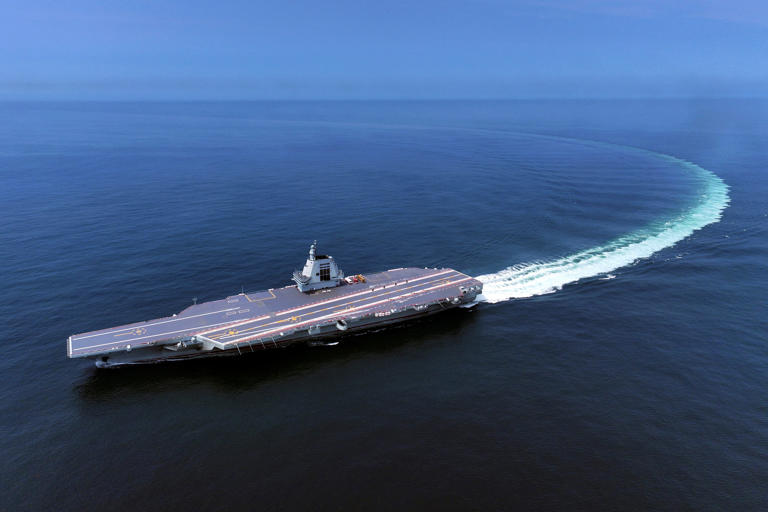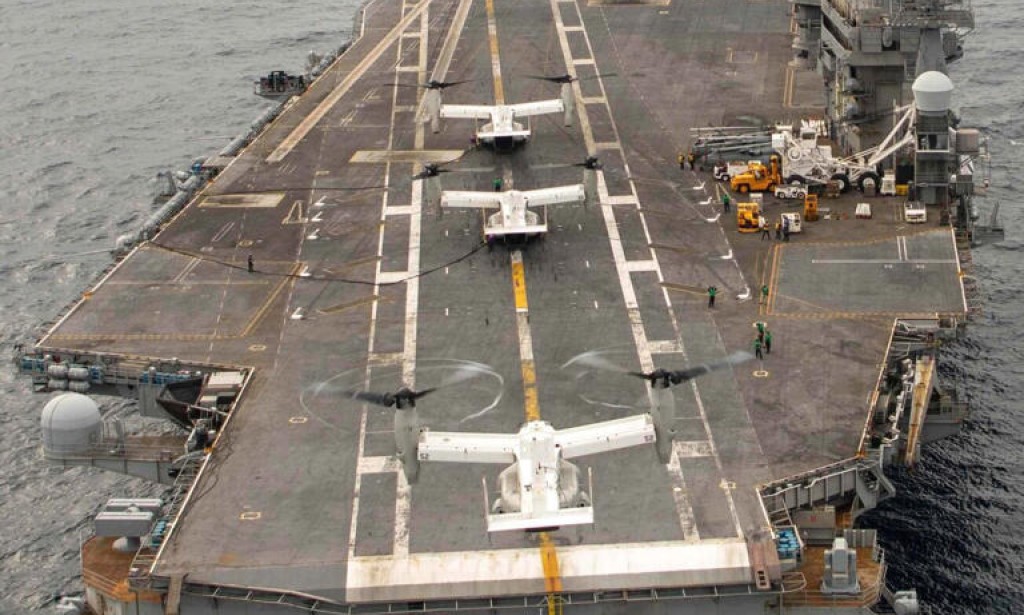
In an August 5 documentary titled *‘Charge Toward First-Class: Aiming for a Strong Military’*, state broadcaster CCTV revealed the Fujian’s flight deck control room. Footage showed a controller explaining how a landing fighter jet moves from a diagonal runway through Catapult Lanes 1 and 2 to a maintenance zone on the opposite side. The military commentary platform *Haishifenbong* cited this scene on September 15, stating, “Simultaneous takeoffs and landings are a minimum requirement for 80,000–100,000-ton-class carriers, yet the Fujian—despite being a large carrier—cannot perform this function.”
First Chinese Carrier with U.S.-Style Catapult
According to graphics provided by the platform, the Fujian’s Catapult Lane 2 overlaps with the end of the diagonal landing runway, while Catapult Lane 3 lies within the landing strip. This means Lanes 2 and 3 cannot be used during landings. Although Lane 1 does not overlap with the landing strip, jets landing must cross it to reach the maintenance zone. The platform noted, “The Fujian’s J-15 fighters are heavy-type aircraft, requiring significant runway length to stop. During landings, both Lanes 1 and 2 are effectively unusable.”The Fujian, launched in 2022, adopted electromagnetic catapults, alarming U.S. observers who speculated, “The U.S. Navy may finally face a true peer.”
A key metric of carrier combat power is sortie rate—the number of missions per day. Nimitz-class carriers average 120 sorties daily, while the Ford achieves 160 (240 in emergencies). Larger flight decks enable simultaneous operations.
Likely a Transitional Platform Before Nuclear Carrier
The Fujian’s displacement exceeds 80,000 tons, with a length of 320 meters and width of 76 meters—approaching the Nimitz-class’s 100,000 tons. However, its flight deck design issues threaten to undermine these advancements.
*Haishifenbong* attributed the problem to a last-minute switch from steam to electromagnetic catapults. Steam systems require 70-meter runways, while electromagnetic systems need over 100 meters, causing overlaps with landing strips.
Analysts suggest the Fujian will serve as a transitional platform until China’s fourth nuclear-powered carrier emerges. Limited by diesel engines and design flaws, it cannot yet rival U.S. carriers. The platform *Yunsowoodang* stated, “The Fujian’s designers prioritized electromagnetic catapults to deploy heavy aircraft like AWACS, sacrificing simultaneous operations. A future nuclear carrier will likely match the Nimitz-class’s capabilities

You must be logged in to post a comment.